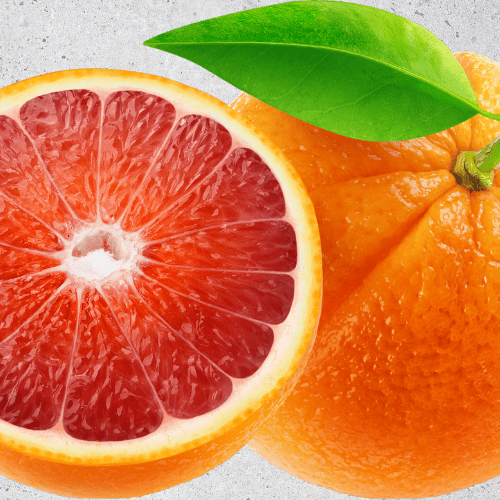Position – Full sun (or, if absolutely necessary, partial shade) with about 2 metres to allow space for growth. If you’re planting it in a pot, a minimum pot size of 50 litres is required.
Size –Dwarf Cara Cara trees can grow to 2-3metres high. This dwarf grafted orange tree usually fruits 1-2 years after planting and bears fruit for 3 to 5 months of the year. If properly cared for, they may bear fruit for more than 50 years.
Soil Type – Cara Cara orange trees are not particularly sensitive to different types of soil but do need soil with good drainage. If your soil is particularly deficient in primary nutrients, consider adding manure or compost to it to boost it. Do not add nitrogen before planting. It should only be added to the soil of well-established Cara Cara trees if and when necessary. Add a bag of acid compost when planting.
Mulch – These sweet orange trees thrive with pine bark mulch but do not apply it too close to the tree trunk and its main roots. Whether your tree is young or well-established, it will benefit from 2 to 5 centimetres of pine bark mulch in the form of green pine needles, leaves or straw. This mulch protects the roots from UV damage and drying out, retains moisture, and maintains an optimal pH.
Watering – Orange trees need to be well-watered regularly. your orange tree should get 2.5 to 4 litres of water weekly. Container grown trees usually require more water as the soil dries out quicker. Avoid over-watering your plant.
Fertilising – Cara Cara trees will thrive with our slow release berry fertiliser (although used for all plants) apply one teaspoon every 4-5 months.
Pruning – While these trees don’t require pruning the first couple of years, they tend to do best (in terms of producing fruits) by cutting a little off the top of the dwarf tree, and shaping when necessary.
Pests & Disease – Citrus trees are susceptible to aphids, red spider, and mildew. We recommend Effective Microorganisms to prevent the spread of these pests and diseases. It is organic and more affordable than most other products.
Harvesting – The oranges will begin as sweet-smelling flowers. These are pollinated by bees and then produce the fruit. This fruit may turn a beautiful yellow-orange colour long before it can be plucked from the branch. Try to leave it for a few weeks, even months. Take a sample of one fruit. When it is sweet and juicy, the rest that looks the same are ready to be picked and enjoyed.






